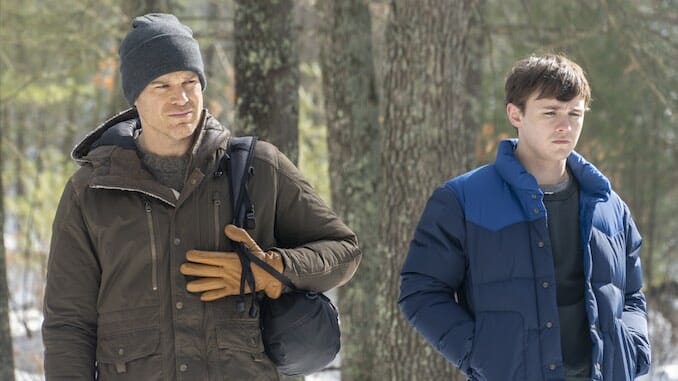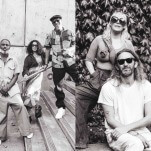Dexter: New Blood—New References Don’t Quite Revive This Old Story
Photo Courtesy of Showtime
So much of the plot of Showtime’s Dexter: New Blood relies on what is either convenience or irony.
In this new take on the popular series based on Jeff Lindsay’s crime-horror book series, Michael C. Hall’s titular anti-hero is now a former serial killer who only murders people he deems reprehensible and harmful to society. But he decides to come out of retirement at the same time as he receives a visit from his long-abandoned son Harrison (now played by Jack Alcott).
And Dexter Morgan—who goes by small-town hunting and tackle shop employee “Jim Lindsay”—just happens to be in the right place at the right time when the latest man he deems repugnant gives him an excuse to sharpen his knives.
In his new life, his girlfriend Angela Bishop (Julia Jones) is the chief of police, who also happens to style her hair similar to that of his late sister, Deb (Jennifer Carpenter). She’s the one fully alert and committed cop on a force that includes a self-aggrandizing newbie halfwit and a senior member who doubles as the high school wrestling coach. And yet, she doesn’t interrogate the hell out of her beau for answers when his backstory suddenly has holes.
Meanwhile, Angela’s teenage daughter Audrey (Johnny Sequoyah) proudly explains the logo of her MMIW (Missing and Murdered Indigenous Women) T-shirt to her meathead boyfriend, while most townies don’t notice the amount of women (white women, so far) disappearing under their noses.
None of these narratives are particularly bad things and they’re vague enough references to the original series that it’s probably possible for new fans to watch without feeling totally confused (although Hall has offered a list of episodes for novices to view before watching New Blood). But for a show like the first Dexter, fans want more than happenstance. We want it all to come together as part of Dexter Morgan’s grand plan.
That’s because the original Dexter was spicy and intoxicating when it premiered in 2006. Hall’s smirking, secretly sinister serial killer hid his thirst for plunging weapons into body cavities behind his day job swiveling in a lab chair as Miami Metro Police Department’s premiere blood spatter analyst. He was the executioner next door who enjoyed his pork sizzling and his shoelaces properly tightened. He was a by-the-book rule follower who had a code for everything, be it how to eat while driving to how to set up a perfect kill scene. From a repeat drunk driver who got off with fabricated emotions to a father figure in the serial killer hobbyist trade who ended up getting the last laugh, Dexter’s murders were satisfying, clean, (mostly) close-ended, and came with a proper pay-off.
Even Baltimore street kids on HBO’s The Wire were into it.
But a lot has happened since Dexter’s trail went cold in 2013—both for TV’s serial killer and murder genre and for the lead character himself. Shows like NBC’s Hannibal and AMC and BBC America’s Killing Eve have relished in beautiful and enticing stories of sardonic and mischievous blood-thirsty slayers. Podcasts and true-crime programming like Serial, Making a Murderer, The Jinx and My Favorite Murder have—for better or worse—mainstreamed an armchair detective movement. And it’s all had its own ouroboros moment thanks to the recent Hulu comedy series Only Murders In the Building, about three crime podcast nuts who investigate a murder in their apartment complex.
- Curated Home Page Articles By Test Admin October 21, 2025 | 3:10pm
-

- Curated Home Page Articles By Test Admin October 21, 2025 | 2:57pm
- Urls By Test Admin October 21, 2025 | 2:57pm
- Curated Home Page Articles By Test Admin October 21, 2025 | 2:55pm
-

-

-

-

-

-

-

-

-

-

-

-

-

-

-

-

-

-

-

-

-

-

-

-

-

-

-

-

-

-

-

-

-

-

-




































